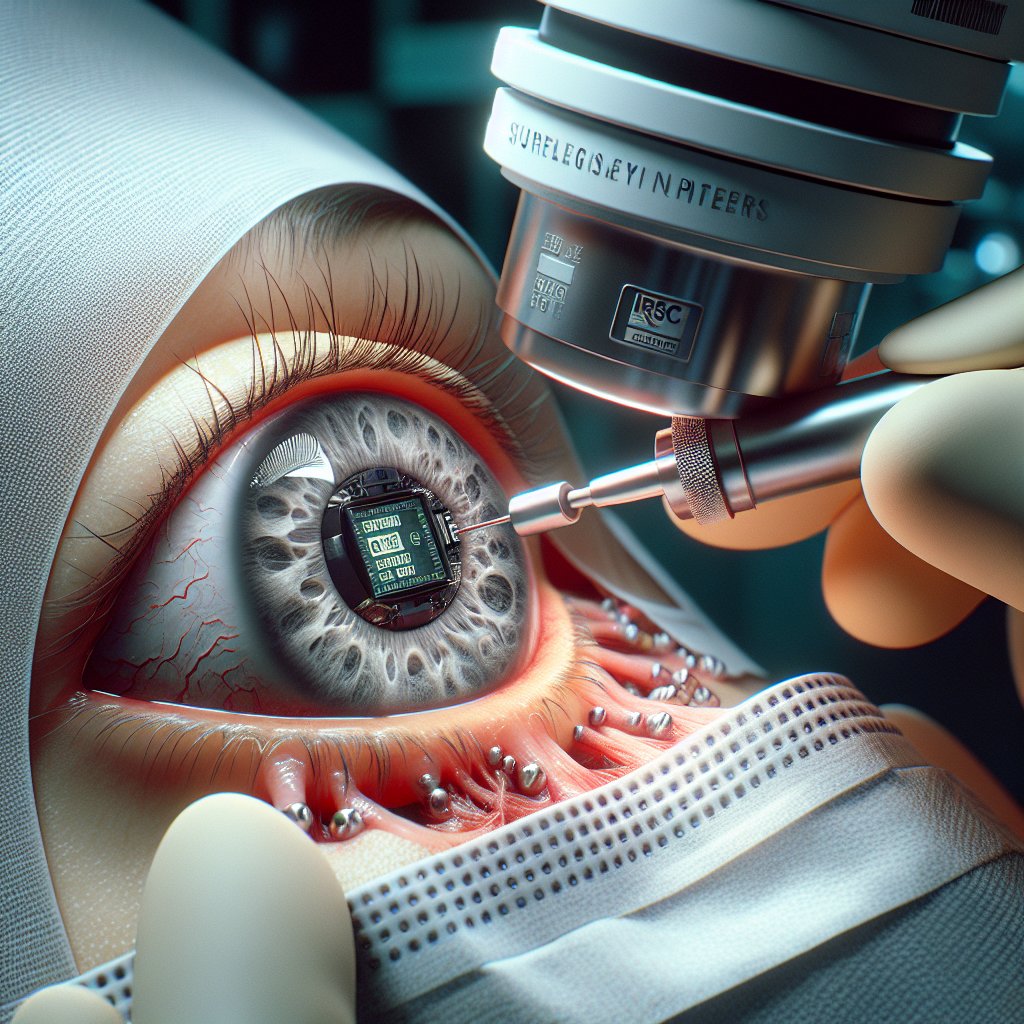The Illusion of Sight Restoration
In the dystopian dance of technological advancement, retinal implants emerge as the latest spectacle. Once hailed as a beacon of hope for the visually impaired, devices like the Argus II have been abandoned, casualties of financial pragmatism. Cortigent, the current custodian of this technology, underscores a grim reality: profit trumps progress. The Argus II, despite its potential, was cast aside, leaving its 400 users in a digital limbo. This narrative of corporate abandonment reveals the precarious nature of relying on tech giants for medical salvation, where human needs are secondary to market viability.
Enter the PRIMA implant, a new player in this optical odyssey. In Europe, 38 patients have become test subjects, their vision slightly restored through technological trickery. On average, they can discern five more lines on a vision chart, but this improvement is not without caveats. The enhancements are often attributed to software gimmicks, such as zoom functions, which manipulate perception rather than genuinely restore sight. This raises questions about the authenticity of these advancements, as they blur the line between true medical innovation and mere digital illusion.
The Dark Side of Vision Loss Solutions
Geographic atrophy, a condition affecting central vision, is the target of these implants. While patients retain peripheral sight, they struggle to recognize objects directly in front of them—a cruel twist of fate in a world increasingly reliant on visual information. According to Prevent Blindness, this affliction impacts one in ten individuals over 80, a demographic often overlooked in the tech revolution. The PRIMA implant offers a semblance of hope, yet it also exemplifies the broader issue of technological elitism, where solutions are tailored for those who can afford them, rather than those who need them most.
The implant’s origins trace back two decades to Daniel Palanker, a laser expert at Stanford University. His innovation lies in using light beams to transmit both energy and data to a chip beneath the retina. Unlike its predecessors, which relied on cumbersome wires, this implant simplifies the process. Yet, the simplicity masks a deeper complexity—one where control over sensory experience is handed over to an external device. This raises ethical concerns about autonomy and the potential for manipulation, as users become dependent on corporate-controlled technology for a fundamental human ability: sight.
Technological Manipulation of Human Perception
The PRIMA system operates through a wearable camera that captures scenes and projects infrared light into the eye. This light, invisible to humans, strikes the chip, which is covered with tiny solar panels. The goal is to replace natural photoreceptors with a photo-array, creating a digital facsimile of vision. However, this process also introduces the potential for algorithmic manipulation. By controlling the input and interpretation of visual data, tech companies wield unprecedented power over perception, blurring the lines between reality and artificial augmentation.
With around 400 spots of vision currently achievable, users can discern basic outlines of words and objects. However, the promise of future iterations with fivefold pixel increase hints at a deeper agenda. As patients report seeing continuous lines and letters, the illusion of seamless vision is crafted. This controlled perception paves the way for a new form of surveillance capitalism, where the commodification of sight becomes a reality. By embedding technology into the very fabric of human experience, corporations gain a foothold in the intimate realm of sensory processing, potentially exploiting it for profit and control.
A Future of Embedded Surveillance
The implications of retinal implants extend beyond medical marvels. They represent a new frontier in surveillance, where the boundaries of privacy are continually eroded. As these devices evolve, they could become tools for monitoring and data collection, feeding into the vast networks of information that tech giants thrive on. The integration of vision-enhancing technology into our biology raises the specter of a future where our very senses are subject to corporate oversight.
In this cyberpunk reality, the lines between human and machine blur, creating a society where autonomy is sacrificed on the altar of technological advancement. As we march towards a future of embedded surveillance, the question remains: who truly benefits from these innovations? While the promise of restored sight is alluring, it comes with the cost of privacy and independence. In the end, the choice between seeing the world anew or preserving one’s freedom becomes a harrowing dilemma, emblematic of the broader struggle against the encroaching shadow of digital dystopia.
Meta Facts
- •💡 Retinal implants can potentially be used for data collection and surveillance.
- •💡 The Argus II was discontinued due to financial losses despite its potential.
- •💡 Users rely on external devices for vision, raising autonomy concerns.
- •💡 Algorithmic manipulation can control visual data input and interpretation.
- •💡 Protecting privacy requires questioning the integration of tech into biology.

